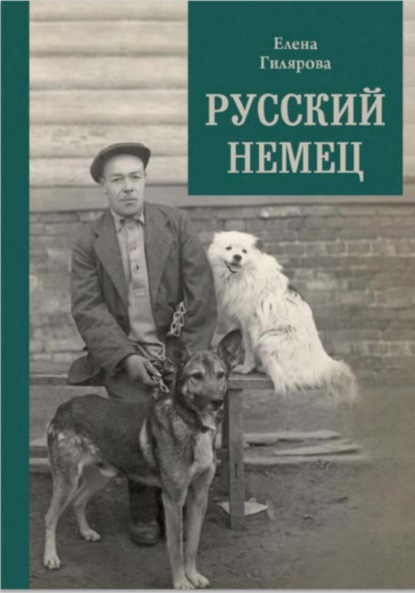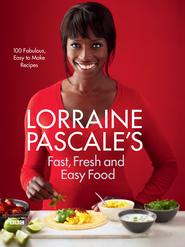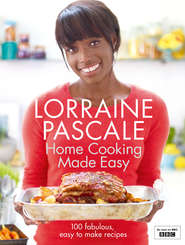По всем вопросам обращайтесь на: info@litportal.ru
(©) 2003-2024.
✖
Baking Made Easy
Настройки чтения
Размер шрифта
Высота строк
Поля
40g (1½oz) butter, melted
1 tbsp treacle
300–340ml (11–12fl oz) buttermilk, or warm milk plus 1 tbsp lemon juice (see intro)
Preheat the oven to 200°C (400°F), Gas Mark 6 and put the top shelf in position.
Place the flours, bicarbonate of soda and salt into a large bowl and stir together. Make a large hole in the centre of the flour mixture and pour in the melted butter and treacle plus enough of the buttermilk to make a loose sticky dough. The best way with treacle is to run the tablespoon under a really hot tap for 10 seconds before dipping it into the treacle. This ensures the treacle runs easily off the spoon and into the dough.
Tip the dough on to a lightly dusted work surface. The dough will be quite sticky. Knead the dough for 1 minute, then shape it into a large ball with a taut, smooth top. Place the dough on a baking tray and flatten it a bit. I find the easiest way to do this is with a rolling pin. Take a wooden spoon, put some flour over the whole handle then hold it horizontally over the bread. Put the wooden spoon handle on top of the bread then push it down until you feel the baking tray at the bottom. This mark is the first half of the trademark soda bread cross. Repeat with a line at right angles to this. Dust with some flour then bake in the oven for 30–40 minutes, or until the bread is brown, has risen nicely and the dough inside where the cross was made is not damp.
Serve fresh from the oven with butter and jam. This bread does not keep well so is best eaten on the day that it is baked – but if you have any left, it does make good toast.
Doris Grant
Loaf
A ‘No-need-to-knead bread’, adapted from a 1940s recipe by healthy-eating evangelist Doris Grant, who believed white flour – and its lack of nutrients – was the enemy. Making bread one day, Doris forgot to knead it. On tasting the loaf, she discovered it had a very fair taste and decided never again to bother kneading her bread. The resulting loaf is heavy but quicker to make than other types of bread. Makes 1 small loaf
225g (8oz) strong white bread flour, plus extra for dusting
225g (8oz) strong wholemeal flour
1 tsp salt
1 x 7g sachet of fast-action dried yeast
1 tbsp honey
300ml (11fl oz) warm water
Vegetable oil or oil spray, for oiling
A little milk, for brushing
Dust a medium baking tray with flour.
Sift the flours into a large bowl and reserve the grain – the brown bits that are too big to fit through the sieve. Add the salt and yeast, then make a big hole in the centre and pour in the honey and water. Mix well to form a smooth dough, working it gently with your hands if necessary. If the dough feels a bit stiff, add an extra 2 tablespoons of water. Shape into a ball and place on the prepared baking tray. Make sure the top is smooth and wrinkle-free. Cover the dough loosely with oiled clingfilm, making sure it is airtight, and leave to rise in a warm place for a good hour, or until it has almost doubled in size.
Preheat the oven to 200°C (400°F), Gas Mark 6. Remove the clingfilm from the dough and make a few slashes in the top with a sharp knife – I use a sharp serrated knife and saw gently. Brush the loaf with milk, sprinkle with the reserved grain, then place in the oven. Throw about 10 ice cubes into the bottom of the oven – they will produce steam, which keeps the crust from hardening too quickly. (A quickly hardened crust prevents the bread from rising well.) Bake the bread for 30–40 minutes, or until it has risen, sounds hollow when tapped underneath and comes easily off the baking tray. Remove from the oven and leave to cool on the tray. Eat as soon as it is cool enough.
Serve fresh from the oven with loads of butter. These loaves do not keep well. However, if the whole lot does not disappear in one sitting, slice up the remainder and put it in the freezer. When ready to eat, pull out a slice and pop it in the toaster. Breakfasts for the next few days…? Sorted.
Pumpkin & rosemary
Muffins
I wrote this in November, when pumpkins had been whisked away for Halloween, so I had to substitute a butternut squash. To cook a small amount of pumpkin, dice into cubes and place in a pan with just enough water to cover. Bring to the boil, lower the heat and pop on a lid, slightly askew. Boil/steam for 5–10 minutes and top up with water if needed. Drain and use. These muffins don’t rise loads but they have a flavoursome, moist crumb. Makes 12 muffins
Vegetable oil or oil spray, for oiling
180g (6½oz) self-raising flour
130g (4½oz) wholemeal flour
1 tsp baking powder
½ tsp bicarbonate of soda
Good pinch of salt
3 sprigs of fresh rosemary, very finely chopped
240g (8½oz) cooked pumpkin (about 1 small wedge), cut into 0.5cm
(¼in) dice. Ready-cubed, uncooked squash is available in the supermarket
2 eggs, lightly beaten
100ml (4fl oz) plain yogurt
275ml (10fl oz) milk
3 big squidges of honey
60ml (2½fl oz) vegetable oil
Handful of pumpkin seeds
Equipment
12-hole muffin tin
Preheat the oven to 200°C (400°F), Gas Mark 6.
Cut out 12 squares of baking paper measuring about 14 x 14cm (5½in). Oil the muffin tin and push the squares down into each hole so the paper sticks up just like the muffins you can buy in the coffee shop. The squares have a habit of popping up out of the holes, which is OK for now as once the muffin mix is spooned inside the squares will stay down. Alternatively, use ready-made paper muffin cases.
In a large bowl, sift the flours, baking powder and bicarbonate of soda, stir in the salt and rosemary. If there is any wholegrain left in the sieve from the wholemeal flour, keep this for the topping.
In a medium bowl, put the rest of the ingredients, apart from a third of the pumpkin, and stir well so all the liquid is well combined. Pour the wet ingredients into the dry and, using a large spoon and no more than 8 turns, mix all the ingredients together. It does not take much to over-mix muffins at this stage and although the end result will still taste sublime the texture will not be as tender. Leave the mixture to stand for 5 minutes, then spoon the mixture into the paper cases.
Sprinkle the wholegrain, reserved pumpkin and the pumpkin seeds over the muffins. Bake in the centre of the oven for 20–25 minutes, or until the muffins are well risen and a skewer inserted in the centre comes out clean.
Good for breakfast, good for lunch and good for just about any time of the day for a snack. For canapés these can made in mini muffin cases as mouthful morsels of scrumbunctiousness.
Chapter 2: Cakes
For me, cakes say cosiness and contentment, home, warmth and love. Whatever the occasion, there’s always room for a cake: there are ‘just like mum would make’ cakes, ‘someone’s getting wed’ cakes, ‘I don’t give a damn’ cakes and pretty little tea cakes. Most people’s first baking memory is of making a cake, side by side with their mother, helping out but ultimately wishing she would be quick and put the cake in the oven so they could get on with licking that spoon or bowl.







